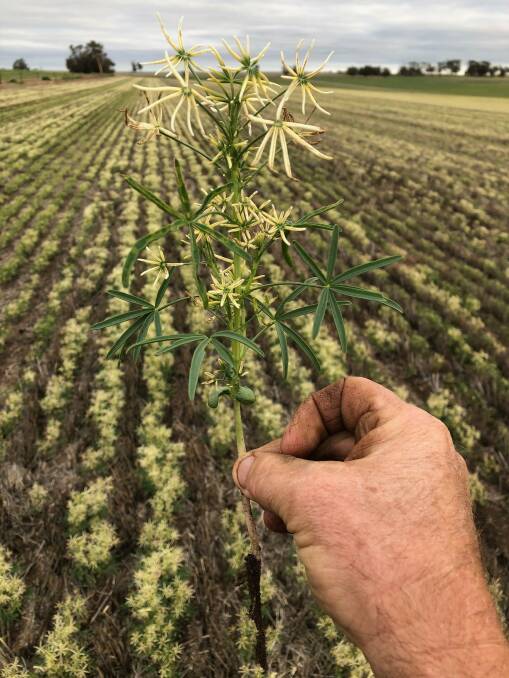
FARMERS have expressed concern regarding the performance of FMC's new herbicide Overwatch, in particular in regard to excessive levels of bleaching in crops treated with the product and with potential concerns about off-target damage.
FMC always noted that there was likely to be some level of crop bleaching with the Group Q product, which was released to much hype as a new mode of action to combat ryegrass, but farmers are worried the impacts have been more severe on the crops sprayed than they anticipated.
As well as the in-crop concerns there are worries about what appears may be off-target damage to nearby crops.
At present FMC and farmers are monitoring the situation and hoping the crops grow out of it and there is no long-lasting damage, but there are some producers saying they do not feel the bixzolone-based product will be able to be as widely used as they first anticipated.
Overwatch is a pre-emergent herbicide for application as an incorporated by sowing treatment in wheat, barley and canola for residual control of annual ryegrass and regionally specific broadleaf weeds.
Barley has been particularly hard hit by the bleaching phenomenon, while there have been reports in Western Australia of off-target damage to lupins grown nearby.
In Victoria there are also concerns about damage to nearby crops.
FMC head of development Geoff Robertson said research showed the crops did grow out of the bleached stage.
"With Overwatch, where the product has been applied pre-emergent to a wheat, barley or canola crop, in most cases growers won't observe any transient bleaching but in the cases where they do, it is transient in nature which means that the bleaching does appear but the crops grow out of it," Mr Robertson said.
"What we've found is that the bleaching typically peaks around four to five weeks after crop emergence and under typical growing conditions, the crops grow out of that bleaching over time and there is no yield penalty at the end of the season."
The FMC research team is investigating the cause of the bleaching and has got four key suspects that may have contributed to the problem.
One is the tank mix and whether the product has been applied with other pre-ems, such as trifluralin and whether that impacts the crop.
Secondly, they are looking at seed placement to see whether the seed has got too close to the product.
"For any pre-emergent herbicide it is important to keep treated soil away from the seed and for Overwatch any seedlings which germinate within three centimetres of the soil surface may be at risk of increased crop bleaching," Mr Robertson said.
Disc seeding systems are always regarded as difficult to use with all forms of pre-emergent herbicides due to the risk of seed / herbicide contact.
Thirdly, he said the unusual start to the season, which featured heavy rainfall and strong winds in WA could have seen the herbicide move into the root zone.
Lastly, he said the company was looking at all stress factors, such as nutrition, insect damage, waterlogging and root or foliar diseases which can affect the ability of the crop to grow out of that transient bleaching.
In Victoria and South Australia, where the damage has also been prevalent, many crops have germinated on minimal moisture and are not particularly robust, which farmers suspect may have some impact on the extent of the damage.
The problems with Overwatch have reported across the southern half of the country, through the Riverina in NSW, Victoria, SA and WA.
Farmers in northern NSW and Queensland said they have not used the herbicide as ryegrass is not a major problem for them.
Mr Robertson said trials had showed the product was not considered volatile, which was one suggestion as to why there had been damage consistent with the Overwatch bleaching symptoms in nearby crops but no damage from other herbicides included in tank mixes.
"There has been some talk around the volatility of Overwatch, but the data that was put into the product submission was verified by the APVMA and the product is considered by them to be non-volatile," he said.
"However, it's important to note that we're still out there visiting growers and trying to work through the situations of the sprayer set-up, wind direction, environmental conditions and the like to try and figure out what is going on."

